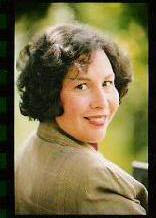Families in Homeopathy
Posted on
Families in Homeopathy
Melanie J. Grimes, R.S. Homeopathic (NA), CCH
With the increase in the number of homeopathy remedies, from the 100 or so in Hahnemann’s time to the many thousands today, different systems have evolved to track, compile, reference and eventually prescribe the simillimum.
Computers have greatly enhanced our search abilities, enabling a much more specific exploration. With this renewed ability, comes elevated responsibilities, as is true in all areas of life.
The responsibility we now face is to accurately conduct provings, to accurately extract the data, to accurately add data to the repertories. People of integrity are now charged with organizing repertories and applying standards, as the gatekeepers of this accuracy.
The bottom line is the patient. Can we more accurately and specifically prescribe for each individual. And do the ends justify the means? Most important to consider is ease of use, speed, i.e. time needed to find a correct prescription, and short training period to learn.
When I began studying homeopathy in 1972, repertization was done by hand on paper. Daily, I am grateful to the computer programmers who spared me and us all from this tedium. In fact, I do not think homeopathy would have had the revival it now enjoys were it not for the computerization of the repertory and materia medica databases.
This brings us to the subject of families.
Each remedy is a unique entity, as each individual is a unique entity. That being said, there is something to be gained by grouping like with like. A creature that lays eggs and flies is more similar to another egg-laying flyer than to, say, a fur bearing, four legged live bearing creature, which eats egg-layers for breakfast.
What constitutes family? What parameters are needed to include a remedy in a family? Can you group animal, vegetable, mineral remedies in one family? Do we need families?
My opinion is that organization is the keynote of science and society, and any system that seeks to organize itself is a sign of intelligent design.
Rather than bicker over whose organizational system is right, I say, the proof is in the pudding. Or it will be, when an increasing number of cured cases raises homeopathy to greater visibility as a curative healing modality. Or not. The truth will out.
Families of plants have, even in recent times, been classed by the color of their flowers. This is a simple classification; easy for even a child to do and most useful if you are arranging flowers on the dinner table. A classification of plants by flower color is not the best for homeopathic similitude, because the ability to produce a red or white or yellow flower doesn’t indicate a particular characteristic commonality, as say,the ability to produce fever. What is useful to homeopathy is a classification that allows a list, or rubric if you prefer, with any remedy that might treat a specific system. The current use of “families” is sometimes useful in this regard, and sometimes not. Again, time will tell.
One thing all homeopaths agree on is that the words of the patient, or perceiving the words and actions of the patient, leads to finding the remedy, if not the cure. Wouldn’t it be wonderful if somehow the patient’s words could be used to search for a remedy, without the cumbersome step of translating into 19th century language? (How do you find “fear of flying” in Kent’s Repertory?) Or remembering where you last saw the rubric, “generals, worse heat, worse waking, left side, pain in spots”, or was it “left side, pain in spots, heat agg.? The new computerised word-search databases have been a mighty asset in these situations.
Miccant’s new software, Families, is another leap forward in this regard. It gathers every word in the case and analyses its probability. I think this is a brilliant use of our modern technology, and provides a way into a case without repertization.
What? No repertory? Homeopaths will scream. But your complaints fall on deaf ears, as I remember the day when those same individuals complained about losing paper and pencil repertorization.
The bottom line is this. Great skill must still be taken in case taking, as garbage in = garbage out.
The case will be found in listening, perceiving what needs to be cured in the case. If a practitioner can do his/her part of the work, it, the Families software, will greatly aid in the rest.
Melanie Grimes
Award-winning Screenwriter
Professional Homeopath
Adjunct Faculty Bastyr University
Author and Medical Editor
Journal Editor: The American Homeopath
Board Member: Pacific Northwest Writers’ Association
Melanie Grimes has been a writer since the age of seven. Her published works include books, journals, articles, essays, screenplays, teleplays, and librettos.
Melanie began studying homeopathy in 1972 and has been a registered member of the Society of Homeopaths (NASH) since 1992. She is the editor of The American Homeopath, and lectures internationally.
To purchase the Families software click here:
http://www.shop.miccant.com/ourshop/prod_3407348-Families-v3.html